Entry Database : PDB / ID : 5u8cTitle CRYSTAL STRUCTURE OF GLUN1/GLUN2A LIGAND-BINDING DOMAIN IN COMPLEX WITH GLYCINE AND NVP-AAM077 GLUTAMATE RECEPTOR IONOTROPIC, NMDA 2A Glutamate receptor ionotropic, NMDA 1 Keywords / / Function / homology Function Domain/homology Component
/ / / / / / / / / / / / / / / / / / / / / / / / / / / / / / / / / / / / / / / / / / / / / / / / / / / / / / / / / / / / / / / / / / / / / / / / / / / / / / / / / / / / / / / / / / / / / / / / / / / / / / / / / / / / / / / / / / / / / / / / / / / / / / / / / / / / / / / Biological species Rattus norvegicus (Norway rat)Method / / / / Resolution : 1.598 Å Authors Romero-Hernandez, A. / Furukawa, H. Funding support Organization Grant number Country National Institutes of Health/National Institute of Mental Health (NIH/NIMH) MH085926 National Institutes of Health/National Institute of General Medical Sciences (NIH/NIGMS) GM105730
Journal : Mol. Pharmacol. / Year : 2017Title : Novel Mode of Antagonist Binding in NMDA Receptors Revealed by the Crystal Structure of the GluN1-GluN2A Ligand-Binding Domain Complexed to NVP-AAM077.Authors : Romero-Hernandez, A. / Furukawa, H. History Deposition Dec 14, 2016 Deposition site / Processing site Revision 1.0 May 17, 2017 Provider / Type Revision 1.1 Jun 7, 2017 Group / OtherRevision 1.2 Sep 27, 2017 Group / Category / Item Revision 1.3 Nov 27, 2019 Group / Category / Item Revision 1.4 Oct 4, 2023 Group / Database references / Refinement descriptionCategory chem_comp_atom / chem_comp_bond ... chem_comp_atom / chem_comp_bond / database_2 / pdbx_initial_refinement_model Item / _database_2.pdbx_database_accessionRevision 1.5 Oct 30, 2024 Group / Category / pdbx_modification_feature
Show all Show less
 Yorodumi
Yorodumi Open data
Open data Basic information
Basic information Components
Components Keywords
Keywords Function and homology information
Function and homology information
 X-RAY DIFFRACTION /
X-RAY DIFFRACTION /  SYNCHROTRON /
SYNCHROTRON /  MOLECULAR REPLACEMENT /
MOLECULAR REPLACEMENT /  molecular replacement / Resolution: 1.598 Å
molecular replacement / Resolution: 1.598 Å  Authors
Authors United States, 2items
United States, 2items  Citation
Citation Journal: Mol. Pharmacol. / Year: 2017
Journal: Mol. Pharmacol. / Year: 2017 Structure visualization
Structure visualization Molmil
Molmil Jmol/JSmol
Jmol/JSmol Downloads & links
Downloads & links Download
Download 5u8c.cif.gz
5u8c.cif.gz PDBx/mmCIF format
PDBx/mmCIF format pdb5u8c.ent.gz
pdb5u8c.ent.gz PDB format
PDB format 5u8c.json.gz
5u8c.json.gz PDBx/mmJSON format
PDBx/mmJSON format Other downloads
Other downloads 5u8c_validation.pdf.gz
5u8c_validation.pdf.gz wwPDB validaton report
wwPDB validaton report 5u8c_full_validation.pdf.gz
5u8c_full_validation.pdf.gz 5u8c_validation.xml.gz
5u8c_validation.xml.gz 5u8c_validation.cif.gz
5u8c_validation.cif.gz https://data.pdbj.org/pub/pdb/validation_reports/u8/5u8c
https://data.pdbj.org/pub/pdb/validation_reports/u8/5u8c ftp://data.pdbj.org/pub/pdb/validation_reports/u8/5u8c
ftp://data.pdbj.org/pub/pdb/validation_reports/u8/5u8c
 Links
Links Assembly
Assembly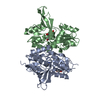
 Components
Components



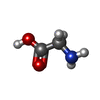






 X-RAY DIFFRACTION / Number of used crystals: 1
X-RAY DIFFRACTION / Number of used crystals: 1  Sample preparation
Sample preparation SYNCHROTRON / Site:
SYNCHROTRON / Site:  NSLS
NSLS  / Beamline: X29A / Wavelength: 1.1 Å
/ Beamline: X29A / Wavelength: 1.1 Å molecular replacement
molecular replacement Processing
Processing MOLECULAR REPLACEMENT
MOLECULAR REPLACEMENT Movie
Movie Controller
Controller



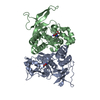
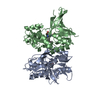
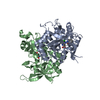
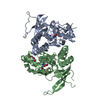
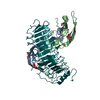
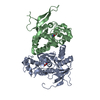



 PDBj
PDBj







